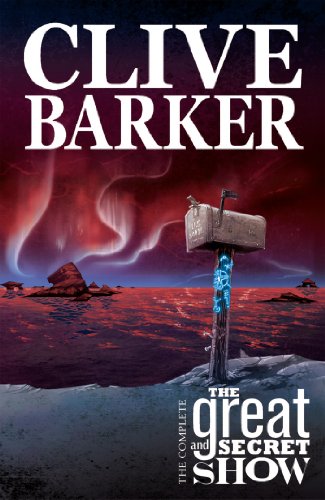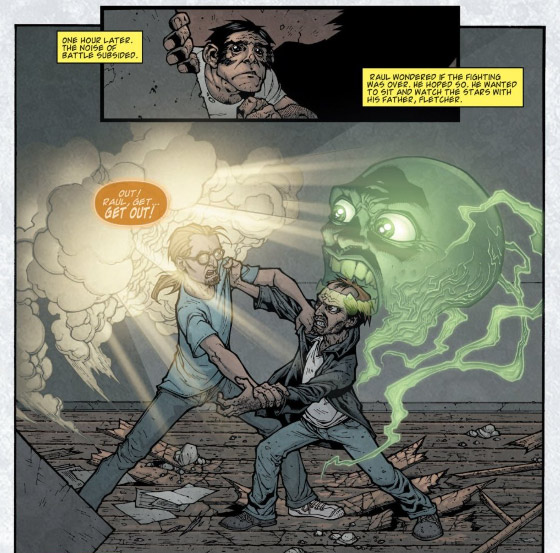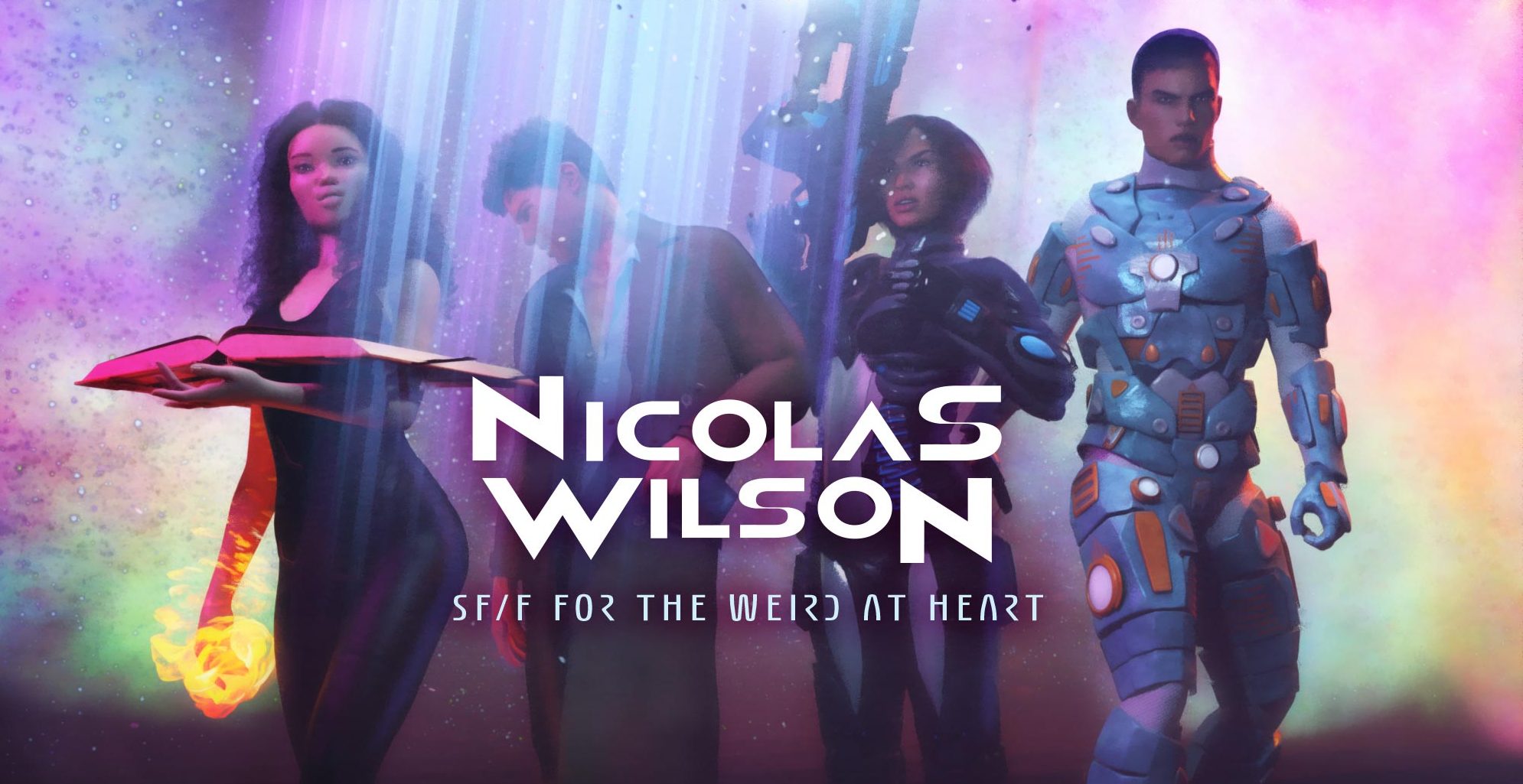
The Great and Secret Show is an adaptation of Clive Barker’s first Book of the Art into comic form. The art is done by Gabriel Rodriguez, the impressive artist behind Locke & Key. While I think it would be easy to assume that what makes L&K work is Joe Hill’s writing, I think that misses the subtle craft of Rodriguez’s art. It’s more towards the exaggerated, animation-inflected end of the realism spectrum, but there’s a grubby humanity in his art, in particular in Sam Lesser. Sam’s a bad man, but Rodriguez infuses him with sadness, and his soulful, expressive eyes do make you wish for better for him.
Perhaps part of why I’m so focused on Sam is that Randolph Jaffe kind of looks like a grown-up Sam, with thinning hair and those same, kicked-puppy eyes. Jaffe starts out as our introduction to the world of the Art. In a different story he’d stay our protagonist. But Barker likes complicated worlds, with heroes who become villains and villains who become heroes, and just because someone’s turned from face to heel doesn’t mean they won’t become a face yet again when a still more evil villain arrives.
But I’m getting ahead of myself. Jaffe works in the dead letter office of the post office. His supervisor demands he split whatever booty he finds in the letters, but otherwise gives him free reign. Jaffe discovers, between the lines of paranoid rants about UFOs and psychics and conspiracies the underpinnings of a secret world, the world of the Art.
This story twists around like a pit of angry, cannibalistic snakes. Jaffe (I refuse to call him the Jaffe), creates his own nemesis while searching for a partner to help him unravel the secrets of the Art. He and this partner engage in a power struggle that ends up enveloping an entire town in their schemes, moves, and countermoves.

One of the first, which probably is less squicky if you assume it’s more metaphysical and unintentional than overt. A group of young women swimming near the site of their great psychic battle end up pregnant; whatever metaphysical underpinnings might have been at play, the women experience it as a violation and an assault. One of the reasons why Barker is relatively good at this kind of story is that he follows through on the consequences of an assault like this. That there are multiple women involved also means that the women are given more opportunity to fall apart as individuals, as opposed to being expected to represent all assault victims. It’s also a corruption of a sort, beyond even the usual sort of disruption typical, which could reasonably (if incorrectly, to my mind) be read as saying that sexual assault survivors are damaged goods; if that makes you uncomfortable by all means skip the story- Barker tends to walk a line on sexual violence that isn’t for everyone, and honestly, I think that needs to be okay. There’s a rainbow of experiences that bring people catharsis; even if it’s not my cup of tea, I think people should be free to pursue the things that make them whole or make them heal. That’s not the only permissible discussion of sexual violence, but I think in general provides pretty open borders as to what I’m personally open to.
A lot of the rest of this story is about those women, and their children. The story goes in wild, weird directions, but suffice to say that the Art is, at its heart, about developing a way to reach deep into the human unconscious, granting both power and knowledge. The story is imaginative, and at times gut-wrenching. Since we’re still waist-deep in a pandemic, this suggestion is more robust than usual, because while I’m excited for the coming Candyman sequel, seeing it in a theater at this point is just irresponsible. The Great and Secret Show is a better value, and reading it is almost guaranteed not to kill any of your neighbors or coworkers.
